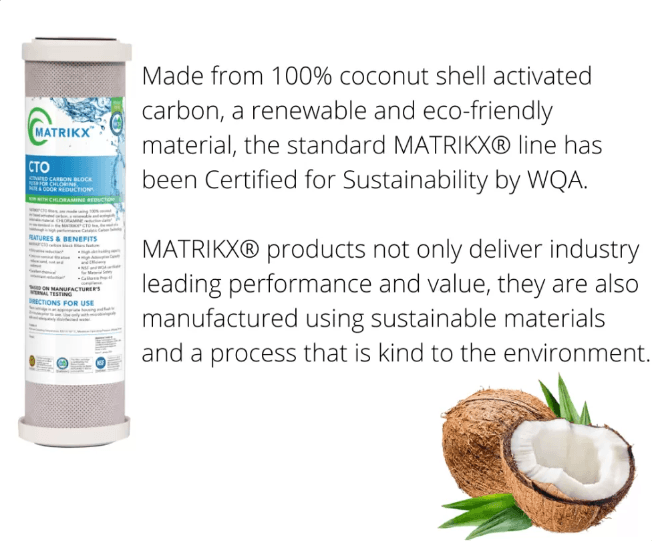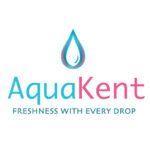When it comes to choosing the perfect water dispenser, it’s essential to consider everything from types and features of water dispensers to maintenance. This guide dives into the key aspects of water dispensers, including different filtration options, installation requirements, and the benefits of advanced models like alkaline and tankless dispensers. By the end of this article, you’ll have a clear understanding of what to look for, ensuring you select a dispenser that fits your needs while enhancing your access to safe, clean, and refreshing water.
What is a Water Dispenser?
A water dispenser is an appliance designed to provide easy access to clean drinking water. It can supply water at various temperatures, such as hot, cold, or room temperature, depending on the model. Water purifier is a similar term used for these type of appliances.
Dispensers typically come in 4 types:
- Bottled – Using large gallon water bottles as the source. Refilling and loading of bottled water can be done either from the top or bottom, depending on the model.
- Direct Piped in – They are connected directly to the water supply with built-in filtration systems. No manual top up is needed, water refills automatically.
- Airpots & Kettles – These are also known as hot water dispenser that only require electrical point. Water needs to be refilled into the tank.
These above types are usually tank systems with hot and cold storage tanks.
- Tankless – Advanced models that include features like UV sterilisation, electrolysis cleaning, multiple temperature settings, DIY easy change filter replacements with indicator. This systems are usually directly piped in as well.
Water Dispenser, Water Purifier and Water Filter, Are They All the Same?
No, water dispensers, water purifiers, and water filters are not the same, though they often complement each other in providing clean and convenient drinking water. These are common terms used by consumers when enquiring with us. Many do not know the differences between them. Lets break it down.
- Water Dispenser: A device that provides easy access to hot, cold, or room-temperature water. It can be standalone or integrated with filtration systems (bottleless or tankless).
- Water Purifier: Removes harmful contaminants like bacteria, viruses, and chemicals, using advanced technologies such as UV, RO, or ultrafiltration (UF). Purifiers ensure water is safe to drink.
- Water Filter: A broader category that removes sediments, chlorine, or impurities to improve taste and appearance. Filters are simpler than purifiers and may be part of dispensers or standalone.
Each serves a unique role but may be combined in certain systems for optimal functionality.
Why Choose a Water Dispenser?
Water dispensers simplify access to clean drinking water, which is essential for staying hydrated and healthy. They also reduce reliance on bottled water, which is great for your wallet and the planet. Whether you’re at home or work, a dispenser offers convenience and a consistent supply of hot or cold water.
Health Benefits of Accessible Clean Water
Having a water dispenser means you’re more likely to drink the recommended daily amount of water. Clean, filtered water improves digestion, boosts energy levels, and helps your skin glow. It’s especially handy for families or workplaces where multiple people rely on a constant water supply.
What Types of Water Dispensers Are Available?
When it comes to water dispensers, you’re spoiled for choice. From space-saving countertop models to advanced tankless options, there’s something for every need.
Table top Models for Small Spaces
Compact and efficient, countertop water dispensers are perfect for homes or offices with limited space. These bottleless systems connect directly to your water supply and often include inbuilt filters for added convenience.
Floor-Standing Dispensers for High Traffic Areas
If you’re catering to a larger crowd, like in offices or schools, floor-standing dispensers are ideal. They can hold more water and often come with advanced filtration systems for heavy use.
Wall-Mounted Dispensers for Space Efficiency
Wall-mounted models are great for conserving floor space while still offering top-notch functionality. They’re common in high-traffic areas such as hospitals or gyms.
Under Sink Water Filter System for a Hidden Setup
Under sink water filter systems are usually installed below the kitchen counter top. This gives a concealed and neat setup. No visible water dispenser tubing and wirings on your countertop. Only a water faucet for drinking water.
For an in depth information on the different types of water dispensers that are relatable to your needs, check out this article.
How Does Temperature Control Work in Dispensers?
Modern water dispensers often come with multi-temperature functionality, making it easy to enjoy hot, cold, or even ambient water at the touch of a button.
Hot and Cold Water Options
Need hot water for your morning herbal tea & coffee? Or cold water for your protein shake after a workout? Temperature-controlled dispensers have you covered. Many systems come with a storage tank for heating and cooling, but advanced tankless models are gaining popularity for their compact design and instant heating and cooling features. Tankless water dispensers with the best quality are commonly manufactured in South Korea.
Customisable Temperature Settings
High-tech dispensers allow you to choose precise temperatures, whether for a warm baby bottle that gives 40ºC to 45º or an icy-cold drink at 4ºC to 8ºC or hot water at 85ºC to 92ºC. This level of control makes them versatile for different needs.
Where Should a Water Dispenser Be Installed?
Choosing the right spot for your dispenser ensures maximum convenience and functionality.
Placement for Home Use
In homes, the kitchen is a popular choice, but don’t overlook the dining area or living room for easier access. For families, it’s crucial to place the dispenser where everyone can easily reach it, including children.
Best Office Locations
For offices, dispensers are best placed in break rooms, reception areas, or conference rooms. This ensures employees and visitors can hydrate without disruption.
Want to know more about optimal placements of water dispenser. This article covers that topic in detail.
What Are the Maintenance Needs of a Water Dispenser?
To keep your dispenser functioning well and providing safe drinking water, regular maintenance is key.
Regular Cleaning and Filter Replacements
Clean your dispenser regularly to prevent bacteria buildup. For models with inbuilt filters, changing them on schedule ensures optimal water quality. Tankless systems may require less frequent maintenance due to advanced sterilisation features like UV cleaning.
What Water Purification Systems Are Available?
A great water dispenser is only as good as its filtration system. Let’s explore the options. Some purification systems can include all of the below filters.
UV Sterilisation for Eliminating Water borne Viruses
Ultra Violet sterilisation systems are excellent at killing bacteria and viruses, ensuring your water is safe to drink. They’re perfect for areas with uncertain water quality.
Reverse Osmosis (RO) Systems
RO water systems are a powerhouse in water purification, forcing water through a membrane with tiny pores of size 0.0001 to 0.001 (µm) microns removing contaminants like heavy metals and pesticides. They’re ideal for those seeking the highest water quality.
Ultrafiltration (UF) Systems
An ultrafiltration membrane is a filter that removes particles and impurities from liquids. It works by using small pores to separate molecules based on their size, typically in the range of 0.01 to 0.1 (µm) microns.
Nano Filtration Systems
A nano filtration membrane is a type of filter that helps remove impurities and particles from water. It operates on a smaller scale than other filtration methods, with a micron size typically ranging from 0.001-0.01 (µm) microns. This allows for the retention of larger molecules while allowing smaller ones to pass through, resulting in cleaner and clearer water.
Activated Carbon Filtration Systems
An activated carbon filter is a highly effective tool for water purification. It works by adsorbing impurities and contaminants, such as chlorine, pesticides, and organic compounds, resulting in cleaner and better-tasting water for consumption.
How to Select the Right Water Filter System?
Matching your dispenser with the right filter system is essential for meeting your specific needs.
Whole House Filtration Systems

Sediment
Activated Carbon
UV Sterilisation
UF Membrane
If you want clean water from every tap in your home, consider a whole-house system. It’s comprehensive but might be overkill if you only need filtered drinking water. For basic filtered drinking water, an under sink water filters are suitable for providing clean purified drinking water.
Under Sink Water Filters

There are variety of configurations for under sink water filters. Dual filter housings with sediment and Carbon filters or a simple 4 stage filters that include sediment, pre-carbon, ultrafiltration & post carbon filters. If you want the best purification system, Reverse osmosis purifiers will do the job. These systems can be easily connected to a faucet tap that will give you drinking water at ease.
Portable Water Filters
These are handy for travel or outdoor activities, ensuring you always have access to clean water. They’re not a substitute for a full system but are a great supplement.
What are Additional Water Filter Types?
When it comes to water filtration, there’s more than just the standard systems. Let’s explore other types that offer unique benefits.
Activated Carbon Filters

Activated carbon filters excel at removing chlorine, odours, and certain chemicals from water. They’re particularly effective at improving taste and eliminating unwanted smells. If your water has a noticeable chlorine aftertaste, this is the filter type to consider.
Inline Water Filters for Appliances


Inline filters attach directly to appliances like refrigerators or coffee machines, providing filtered water or ice with minimal effort. These are perfect for households that want seamless filtration without extra steps. Inline filters are commonly found inbuilt in most water dispensers too.
Tap Water Filters

Tap water filters are small, affordable, and easy to install. They’re ideal for quick purification, especially for drinking or cooking. These systems often have replaceable cartridges, making maintenance straightforward.
How Do Filtered Water Dispensers Compare?
Filtered water dispensers combine the best of filtration and dispensing into one unit, but how do they measure up against traditional options?
Benefits of Filtered Water Dispensers
Filtered water dispensers save space and effort by integrating filtration directly into the unit. They’re convenient, ensuring you always have clean, safe water on demand without needing a separate filter system.
Filtered vs. Non-Filtered Dispensers
- Filtered Models: Offer superior convenience, better water quality, and fewer maintenance hassles. They’re perfect for those who value health and efficiency.
- Non-Filtered Models: Less expensive upfront but require separate filtration, which can add complexity over time.
What is Alkaline Water and its Benefits?
Alkaline water dispensers have gained popularity for their potential health benefits. But what makes them unique?
Benefits of Alkaline Water Dispensers
Alkaline water is marketed for its ability to balance pH levels, aid digestion, and provide antioxidant properties. A safe pH level of 8 to 9.5 is commonly used for these systems. is Some studies suggest it may help neutralise acid in the body, although more research is needed.
How Alkaline Water is Made
Alkaline water is produced through ionisation, a process where water passes over electrically charged plates. Many dispensers include this feature, alongside alkaline filters for enhanced taste and purity. Maintenance typically involves cleaning the ionisation plates and replacing filters as needed. Alkaline filters use certain mineral stones to boost pH level of water.
What is a Water Softener System?
Water softeners remove minerals like calcium and magnesium from hard water, which can cause scale buildup in appliances. Scale build up are commonly seen in hot water dispenser tanks, electric heating airpots.
Reducing Scale Build-Up
Installing a water softener extends the life of your water dispenser and improves water taste, especially in hard water areas. In Singapore, we have soft water so basic filtration with UF membrane and activated carbon can help to prevent scale build up.
How Water Softeners Work
Most systems use ion exchange to replace hard water minerals with sodium or potassium, softening the water.
How to Ensure Safe Drinking Water at Home?
The goal is to combine the right water dispenser with regular maintenance and proper placement.
Combining Filtration and Dispensers
Choose dispensers with integrated filtration for the best of both worlds: clean water and convenience in one system.
What are the Key Features to Look for in a Water Dispenser?
Choosing a water dispenser involves more than aesthetics. Key features can significantly impact your experience and overall satisfaction.
Aesthetic Appeal
The aesthetic design of a water dispenser should match the interior of your kitchen. Select monochrome colours such as black, white or gray. Size matters too if you have other appliances on your kitchen counter top. Many tank and tankless water dispenser in the market are getting more slimmer and compact.
Energy Efficiency
Energy-efficient models save on electricity bills while reducing environmental impact. Look for dispensers with energy-saving modes or instant heating/cooling technologies.
Water Capacity
Evaluate the capacity of the dispenser based on your household or office size. For large spaces, high-capacity dispensers are essential, while smaller units work well for personal use or compact areas.
Installation Requirements
Some dispensers, especially direct piped-in or tankless models, require minor plumbing and electrical connections. Understanding these requirements ensures a smooth setup without unexpected surprises.
Frequently Asked Questions
Do you need a water dispenser in Singapore?
Yes, you do need a water dispenser in Singapore. The main function of a water dispenser is to provide hot and cold water at a convenience. Eliminating the task of boiling water in a kettle or stove and filling up water jugs to be stored in refrigerators. Quality of water in Singapore is good as PUB does regular checks that keeps the water safe to drink and up to WHO standards. Water filters in water dispensers are an added step to further purify water to make it cleaner and taste better.
How Do I Maintain a Water Dispenser?
- Clean the tanks every few weeks.
- Replace filters as recommended—usually every 6-12 months.
- Check the manual for troubleshooting tips.
A bit of care goes a long way in keeping your water clean and fresh.
What Filters Are Best for Tap Water in Singapore?
Singapore’s tap water is generally safe but can taste chlorinated in certain areas.
For better-tasting water:
- Go for activated carbon filters.
- For added purity, consider UF filtration.
- UV sterilisation feature is a bonus if bacteria & virus in water are a concern.
This guide should help you choose and maintain the perfect water dispenser for your needs. Ready to explore your options? Visit Aqua Kent Singapore for top-quality water dispensers tailored to your home or office.








